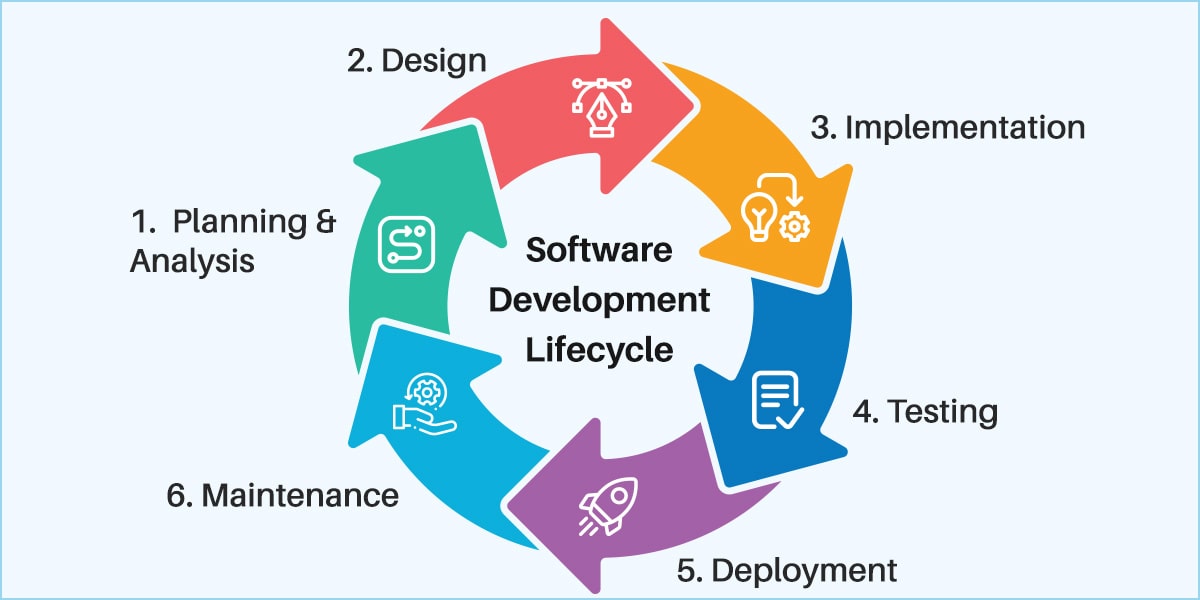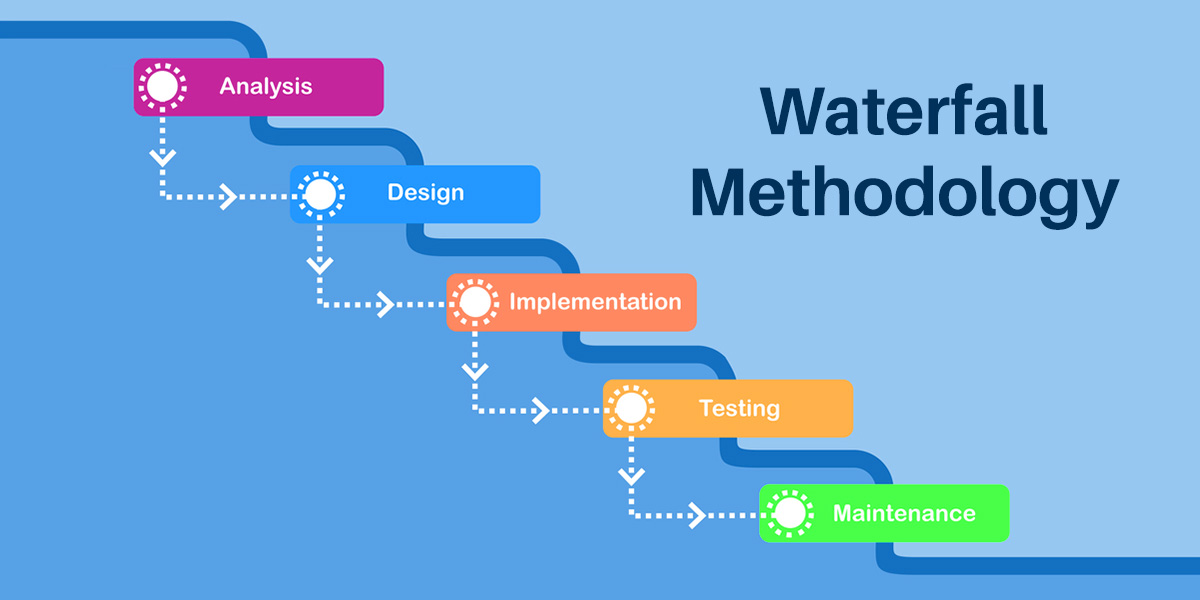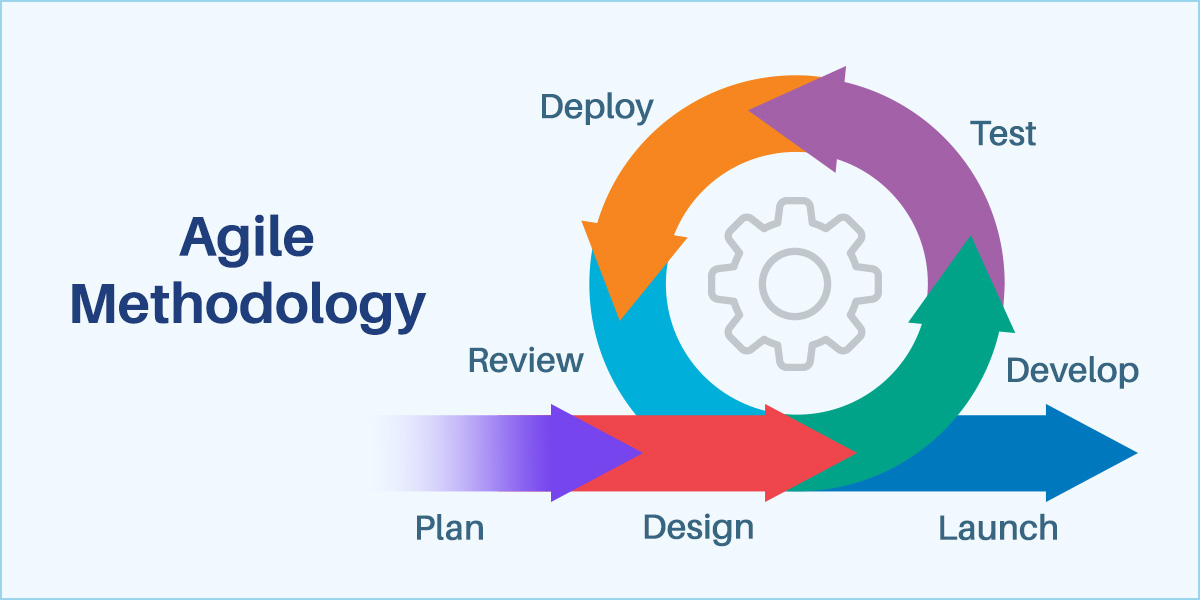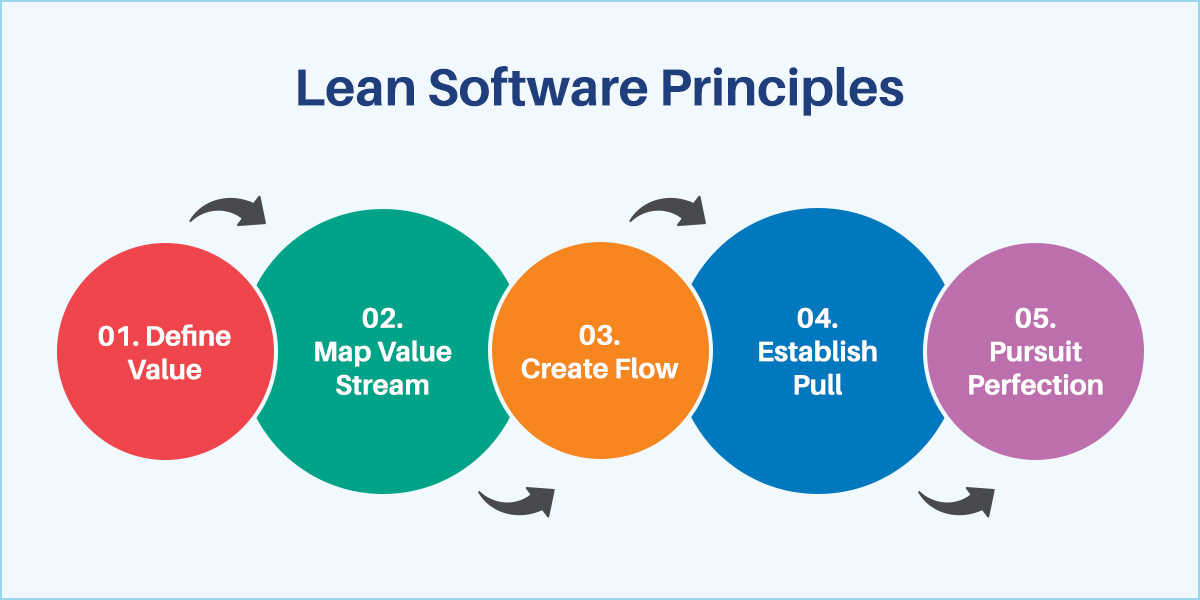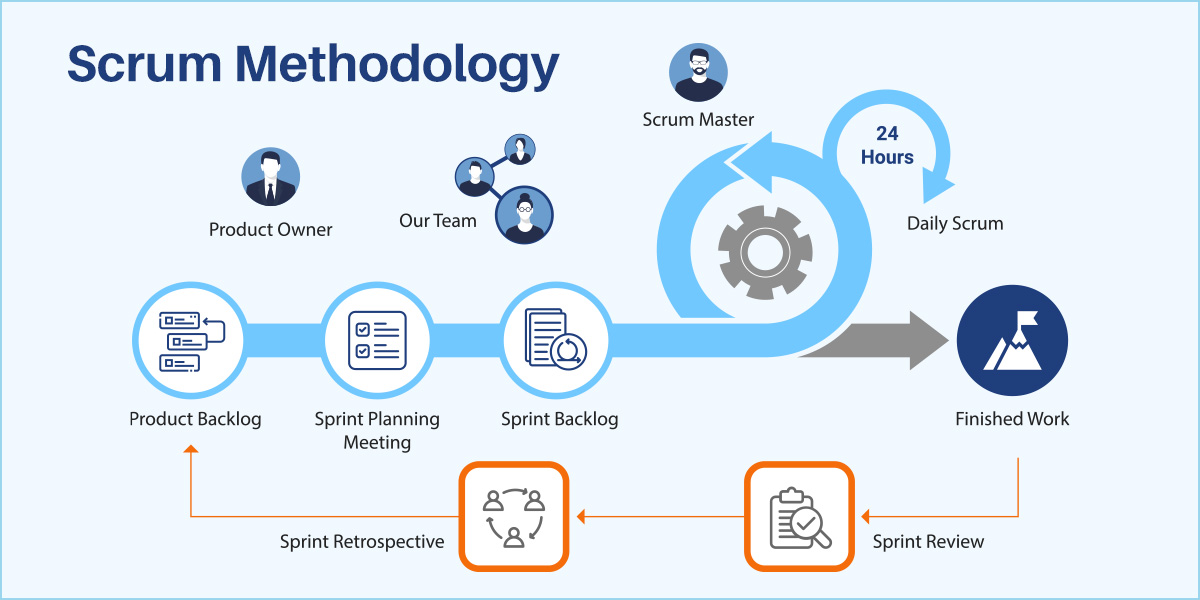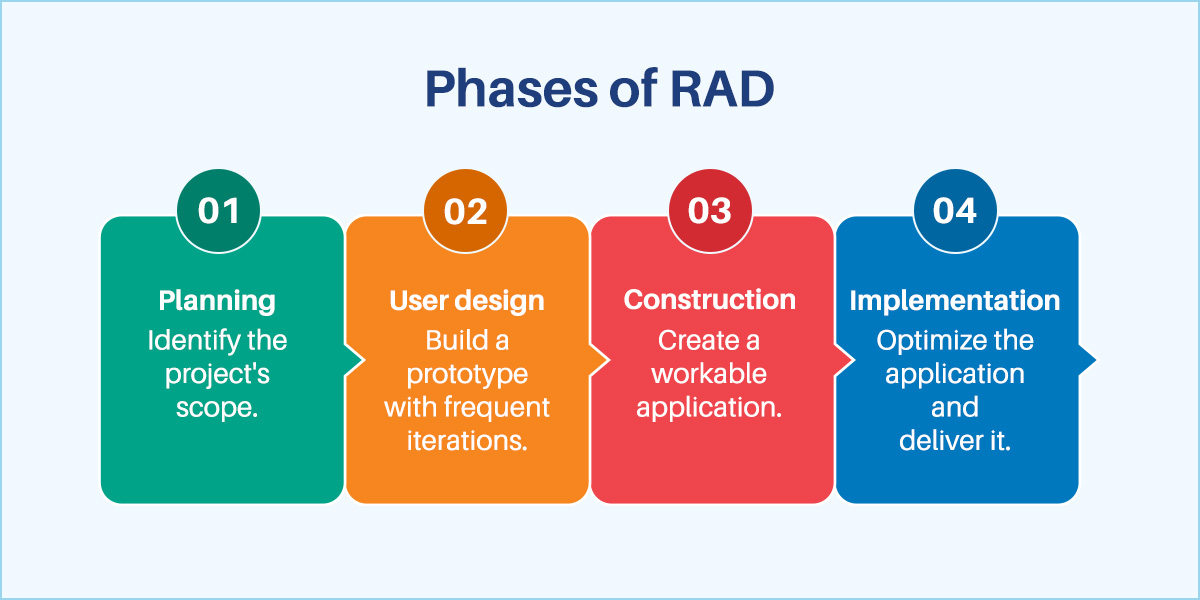What is the Software Development Lifecycle (SDLC)?
The Software Development Life Cycle (SDLC) is a structured process used to design, develop, and test high-quality software. The Software Development Life Cycle serves as a methodology that outlines the entire procedure of software development step-by-step.
The primary objective of the Software Development Life Cycle (SDLC) is to deliver software that is of high quality, maintainable, and meets the requirements of the users. Various SDLC models exist, each outlining a plan for every stage of the software development process. This ensures that each stage can efficiently perform its tasks to deliver the software within a specified time frame and at a low cost, while still meeting the needs of the users.
Why Software Development Life Cycle is Important
Software Development Life Cycle is really important because it’s like a roadmap for making software. It helps in making sure that the people who need the software get exactly what they asked for. It also helps in keeping things organized so that the project doesn’t get too messy or expensive. Plus, it makes sure that any problems are caught early, which means the software can be made better before it’s finished. It’s a way to make sure everyone working on the project knows what they should be doing, and it helps in finishing the project on time and within budget.
Stages of SDLC
The Software Development Lifecycle (SDLC) provides a framework for creating a software application, detailing various essential tasks along the way. This development journey encompasses a series of stages, during which developers introduce new features and address any issues within the software.
While the specifics of the Software Development Lifecycle process can differ across different teams, there are several core phases that are commonly recognized. These are outlined below:
Planning
In the planning stage, it’s like the team is getting ready for a big project. They sit down and think about what the software should do. It’s a bit like planning a trip. You decide where you want to go, how you’ll get there, what you’ll need, how long it will take, and how much money you’ll spend. For software, this means figuring out what features it should have, how many people will work on it, how long it will take to finish, and how much it will cost. This stage is super important because it sets the direction for everything that comes next.
Analysis
Now, the team really digs deep. They’re like detectives, asking lots of questions and gathering clues. They want to understand exactly what is needed and why. This might involve talking to people who will use the software, looking at other similar software, and writing down all the details. The goal is to make sure they know what to build before they start building it. This step helps avoid surprises later on.
Design
With all the information from the analysis, the team starts to draw up the blueprints for the software. This is where they decide how the software will look and work. They think about the different parts of the software, how users will interact with it, and how the software will keep data safe and secure. They also decide on the tools and technologies they’ll use to build it. This stage is a bit like designing a house before you start construction.
Implementation (Coding)
This is where the team rolls up their sleeves and starts to build the software, piece by piece. They write the code, which is like the instructions that tell the computer what to do. It’s a big job, and it’s all about turning the design into something real that works on computers or other devices. Sometimes, the team might work on different parts separately and then put them all together to see how they work as a whole.
Testing
After the software is built, it’s not ready for people to use just yet. The team has to test it first. This means they check everything to make sure it works right and doesn’t have any bugs (which are mistakes in the code). They try out every feature to see if it does what it’s supposed to do. If they find any problems, they fix them. Testing is really important because it makes sure the software is good quality and people will be happy using it.
Deployment
Once the software passes all the tests, it’s time to share it with the world. Deployment means putting the software where people can use it. This could be on the internet, on smartphones, in computers at a school, or anywhere else it’s needed. Sometimes, the team might release a little bit of the software at a time, to make sure everything goes smoothly.
Maintenance
The team’s job isn’t over when the software is released. They keep an eye on it to make sure it keeps working well. If they find any more bugs or if users want new features, the team will make updates or fixes. It’s all about keeping the software up-to-date and making sure it continues to meet people’s needs.
Each of these stages is crucial for making sure the software is successful and does what it’s supposed to do, without causing any problems for the people using it.
Software Development Lifecycle Models
The Software Development Lifecycle (SDLC) offers a structured approach for creating software, and several models exist, each with its own unique methodology and advantages. The choice of model largely depends on the project’s requirements, team size, timeline, and the need for flexibility. Several software development methodologies have been developed to guide the processes involved in software development. Below is a detailed look at some of the most prominent Software Development Lifecycle models:
Waterfall Model
The Waterfall methodology is one of the oldest and most straightforward Software Development Lifecycle methodologies. It is a linear and sequential approach where each phase must be completed before the next one begins, with little to no overlap between phases. The stages typically include requirements, design, implementation, testing, deployment, and maintenance. The Waterfall model is best suited for projects with well-defined requirements and where changes are not expected to occur frequently. Its simplicity makes it easy to understand and manage, but its rigidity can be a drawback in projects requiring flexibility.
Agile Model
The Agile methodology is a highly iterative and incremental approach to software development. Unlike the Waterfall model, Agile encourages continuous feedback and adaptation throughout the project lifecycle. It focuses on customer collaboration, flexible response to change, and the delivery of functional software in short, iterative cycles known as sprints. Agile is well-suited for projects with rapidly changing or highly emergent requirements. It promotes a high degree of collaboration and adaptability but requires a well-organized team with a high level of self-discipline.
Lean Model
The Lean methodology is centered around the principle of maximizing value while minimizing waste. It aims to improve efficiency by identifying and eliminating non-value-adding activities (waste) from the development process. The Lean model focuses on delivering high-quality software in the shortest sustainable lead time. It emphasizes the importance of continuous improvement, efficiency, and eliminating redundancies. Lean is ideal for organizations looking to optimize their development processes and ensure that every task adds value to the end product.
Scrum
Scrum methodology is a subset of Agile and is best described as a framework for managing software development projects. It emphasizes teamwork, accountability, and iterative progress toward a well-defined goal. Scrum divides the development process into short, fixed-length sprints, typically lasting 2-4 weeks, at the end of which teams deliver a potentially shippable product increment. Scrum is known for its flexibility, as it easily accommodates changes and encourages continuous feedback. It is particularly effective for projects with rapidly changing or highly emergent requirements.
RAD (Rapid Application Development)
RAD is an adaptive software development approach that emphasizes rapid prototyping over long drawn-out development and testing cycles. The RAD model is designed to deliver high-quality systems quickly and efficiently, allowing for frequent iterations and adjustments based on user feedback. It involves minimal planning and a focus on rapid construction of prototypes to speed up the development process. RAD is suitable for projects that need to be completed quickly and can benefit from user feedback during the development process.
Each of these Software Development Lifecycle models has its advantages and is selected based on the project’s specific needs, including complexity, time constraints, budget, and the flexibility required. The choice of model can significantly influence the success of a software development project, making it crucial for teams to understand and select the most appropriate model for their needs.
The Importance of the Software Development Lifecycle in Project Success
The Software Development Lifecycle (SDLC) is a critical framework for any software development project, playing a pivotal role in ensuring its success. The structured approach of the SDLC provides a clear path from conception to deployment, allowing teams to manage and execute projects efficiently. Here’s why the SDLC is so important to project success:
Clear Objectives and Scope: The SDLC begins with comprehensive planning and analysis phases, ensuring that the project’s objectives are well-defined and aligned with user needs. This clarity prevents scope creep and ensures that the project stays on track.
Quality Assurance: Through its various stages, especially during testing, the SDLC ensures that the software meets quality standards and user expectations. Identifying and fixing issues early in the development process reduces the risk of significant problems at later stages.
Risk Management: By following a structured process, teams can identify potential risks early and develop strategies to mitigate them. This proactive approach to risk management can prevent project delays and cost overruns.
Efficient Resource Management: The SDLC helps in planning and allocating resources effectively. By understanding the requirements and workload at each stage, teams can ensure that the right resources are available when needed.
Improved Communication and Collaboration: The SDLC fosters better communication and collaboration within the team and with stakeholders. Regular updates and reviews keep everyone informed and engaged, leading to a more cohesive effort.
Adaptability and Flexibility: Modern SDLC models, such as Agile and Scrum, offer flexibility to adapt to changes. This adaptability is crucial in today’s fast-paced environment, where user needs and market conditions can change rapidly.
Customer Satisfaction: Ultimately, the SDLC aims to deliver software that meets or exceeds customer expectations. By involving customers or users throughout the process, the final product is more likely to satisfy their needs, leading to higher satisfaction and loyalty.
Which Software Development Life Cycle model is the best and most commonly used?
The Agile model is often seen as the best and most popular way to make software today. This is because it’s really good at dealing with changes and making sure what is built is exactly what people need. In Agile, teams work in short periods called sprints to make small parts of the software one step at a time. This lets them get feedback quickly and change things if they need to, which helps make the final software better. Agile is all about working together closely, talking a lot, and solving problems as a team. It’s especially good for big or complicated projects that need to be done quickly. So, because Agile can handle changes well and helps teams work together to make software that people really like, it’s become the most popular choice for making software.
Tailoring the SDLC to Your Project: Factors to Consider
Selecting the right SDLC model for your project is crucial. Consider the following factors to tailor the SDLC to your project needs:
Project Size and Complexity: Larger, more complex projects may benefit from models that emphasize thorough planning and documentation, such as the Waterfall model. In contrast, smaller projects might be better suited to Agile or RAD for flexibility and speed.
Customer and Stakeholder Involvement: Projects that require frequent feedback and changes may find Agile or Scrum models more effective, as they allow for regular iteration and adaptation based on stakeholder input.
Team Size and Experience: The structure and expertise of your team can influence your choice of SDLC model. Agile and Scrum require highly collaborative and self-managing teams, while Waterfall or Lean might be suitable for teams used to a more structured approach.
Risk Tolerance: Projects with high-risk factors, including technology uncertainties or market volatility, might benefit from iterative models like Agile, which allow for early detection and mitigation of risks.
Timeline and Budget Constraints: Tight deadlines and budget limits may necessitate models that prioritize speed and efficiency, such as RAD or Lean, which focus on rapid delivery and minimizing waste.
Final Thoughts
Understanding and following the SDLC is critical for the success of any software development project. It helps teams to work in a structured and efficient manner, reduces the risk of project failures, and ensures the final product is of high quality.
If you’re embarking on a software development project, choosing the right software development company is paramount. Look for a partner with a proven track record in your industry or with the specific technologies you require. Evaluate their understanding of the SDLC, their commitment to quality, and their ability to communicate and collaborate effectively. Making the right choice will be a significant determinant of your project’s success.
Are you ready to take the first step towards ensuring your project’s success? Explore how Zaigo Infotech can be the catalyst for your project’s success. Contact us today to discuss your software development needs and see how we can help turn your ideas into reality.
Frequently Asked Questions
The Software Development Life Cycle (SDLC) is a process used for planning, creating, testing, and deploying an information system, through a series of steps that include planning, analysis, design, implementation, testing, deployment, and maintenance.
The 7 phases of the Software Development Life Cycle (SDLC) are Planning, Analysis, Design, Implementation, Testing, Deployment, and maintenance.
The planning phase is often considered the most important step in the SDLC, as it sets the foundation for the project by establishing goals, scope, budget, and timelines, thereby guiding all subsequent phases towards success.


